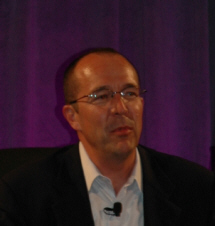Open source youth movement


Szulik expects that a youth movement will expand the reach and popularity of open source. "You can't discount the power of demographic activity....the reality is that at a very young age, depending on their interests, [kids] can download any open source project, so they are developing a set of capabilities and competencies based on open source software. The model of user-based innovations is no longer an oddball idea," Szulik said. An open source youth movement, especially outside the U.S. where open source is more popular, will have an major impact over the next decade as they age into the workplace with their preferences and coding skills. Tools like Grasshopper will make it easier for Windows developers to create components for Linux. But just because a kid cuts his or her programming teeth on open source code doesn't mean they will be forever wedded to the concept of "free" software. Open source business models and licenses, as well as models for proprietary software, will continue to evolve. What's more clear is that software as a service is going to continue to gain traction, and enterprises will be less concerned whether it's proprietary or open source or hybrid code underneath. It's about what works best at what price to solve a particular problem...